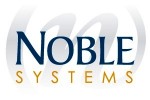New Enterprise Communications Report Finds 90% of Business Leaders Prefer Phone Over Other Communication Tools
95% of business decision makers say voice is important for customer engagement and revenue generation

Ring Central have today released results of a new enterprise communications report that surveyed business leaders and technology decision makers on their current and anticipated phone and technology use. The research revealed telephony is as relevant as ever for businesses of all sizes–and is a strategic driver of customer experience and top-line revenue.
Seven Key Findings of Survey
1. Phone is still king – Over 90% of respondents said that phones are considered one of their main communication tools, with a majority (52%) saying it is their primary communication tool. And over 95% of business decision makers say it is important for customer engagement and revenue generation.
2. Company size doesn’t matter – While small companies are the most likely to say phone is their primary communication tool (58%), even the largest enterprises (10,000+) still are primarily on phone (55%)
3. Phone is being used for everything – Companies are using phones for everything with over half of respondents saying they are used for internal calls (74%), internal meetings (59%), external client calls (82%), external client meetings (61%), external vendor calls (70%), outbound customer calls (64%), and inbound customer service (52%).
4. Traditional systems still reign supreme – a majority of respondents say their company use mobile or on-prem phones with a smaller but growing group using cloud solutions (31%)
5. Phone usage is expected to increase – The future of phone use is bullish according to respondents with a majority expecting phone use at their company to increase in the short term and only 5% reporting an expected decrease.
6. Anytime, anywhere – when asked, the top features professionals want are the ability to use their phone for calls (34% rank in their top three) and texts (30%) where they already work on the laptop or desktop
7. SMS is here to stay and only getting bigger – over 95% report using SMS in some capacity at their company, particularly amongst larger organisations
 Steven Zachok, vice president, product management at RingCentral, said,
Steven Zachok, vice president, product management at RingCentral, said,
“Telephony has been a constant in the workplace for decades. While digital channels like messaging and video have grown in popularity, the study shows voice is here to stay and is, in fact, the preferred mode of communication,”
“Critical for customer engagement, as evidenced by the 85% of survey respondents who said the phone was an important tool. It’s clear that business leaders continue to invest in phone communication because it’s easy for employees to use, and it’s the channel consumers prefer.”
 Jon Arnold, Principal, J Arnold & Associates, an independent industry analyst firm, commented,
Jon Arnold, Principal, J Arnold & Associates, an independent industry analyst firm, commented,
“Businesses know that telephony is more than just a communications application, and is central for workplace productivity,”
“When investing in technologies to support hybrid work, compromises cannot be made with telephony given its real-time nature, as well as the fact that the research shows how telephony usage is only going to increase.”
![]()
 RingCentral, is a leading provider of business cloud communications and contact centre solutions based on its powerful Message Video Phone (MVP®) global platform. More flexible and cost effective than legacy on-premises PBX and video conferencing systems that it replaces, RingCentral empowers modern mobile and distributed workforces to communicate, collaborate, and connect via any mode, any device, and any location.
RingCentral, is a leading provider of business cloud communications and contact centre solutions based on its powerful Message Video Phone (MVP®) global platform. More flexible and cost effective than legacy on-premises PBX and video conferencing systems that it replaces, RingCentral empowers modern mobile and distributed workforces to communicate, collaborate, and connect via any mode, any device, and any location.
For additional information on Ring Central visit their Website
The data referenced was collected via online survey from participants in the United States, Canada, and in the United Kingdom. Participants were recruited by Ipsos between July 13-25, 2022. Selected participants were those responsible for communication technology at their company. Additionally, selected participants are full time employees and hold a title of manager level or above. Relationships between variables collected were analysed using parametric statistics for statistical significance.




